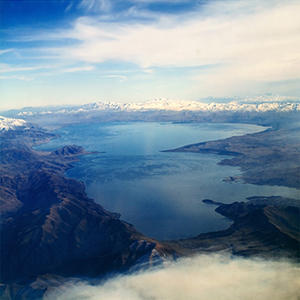Assessment of phosphorus behavior in sediments of Lake Sevan, Armenia

All claims expressed in this article are solely those of the authors and do not necessarily represent those of their affiliated organizations, or those of the publisher, the editors and the reviewers. Any product that may be evaluated in this article or claim that may be made by its manufacturer is not guaranteed or endorsed by the publisher.
Authors
Lake Sevan is the largest freshwater lake in the Caucasus region and one of Eurasia's largest alpine lakes. The lake has been experiencing growing cyanobacteria blooms; however, the relevance of external and internal phosphorus (P) loading to its eutrophication is still not known. We carried out a sediment investigation of Lake Sevan to estimate the potentially mobile P, which could be a source of internal total phosphorus (TP)-loading; we also estimated external TP-loading and retention. The study was carried out at four sampling points of different depths to determine the spatial variability of P in 2018. The sediments had elevated TP contents at the sediment surface; potentially mobile P ranged from 20 to 60% in the top 2 cm. The upper 4 cm sediment had an elevated content of TN (8 to 16.1 mg N g-1 dw) and TP (1.2 to 1.7 mg P g-1 dw). Spatial variability of most of the measured parameters was more prominent in the upper 3 cm. External TP loading was estimated to be 110 tons annually, and the TP retention was 85%. The estimated TP stored in the top cm of the sediment is 1,500 tons. The potential for P release is high; the short-term exchange between oxic and anoxic overlying water could release 0.01 to 0.02 mg P L-1 from the top cm of the sediment, and long-term diagenesis and burial could release about 0.12 mg P cm-2. Internal P-loading in Lake Sevan may play an essential role in eutrophication, especially given the long flushing time of Lake Sevan.
Edited by
Bardukh Gabrielyan, Scientific Center of Zoology and Hydroecology of the National Academy of Sciences of Armenia, Yerevan, ArmeniaSupporting Agencies
Federal Ministry for Education and Research of Germany (BMBF) under the German-Armenian projects SevaMod and SEVAMOD2How to Cite

This work is licensed under a Creative Commons Attribution-NonCommercial 4.0 International License.






